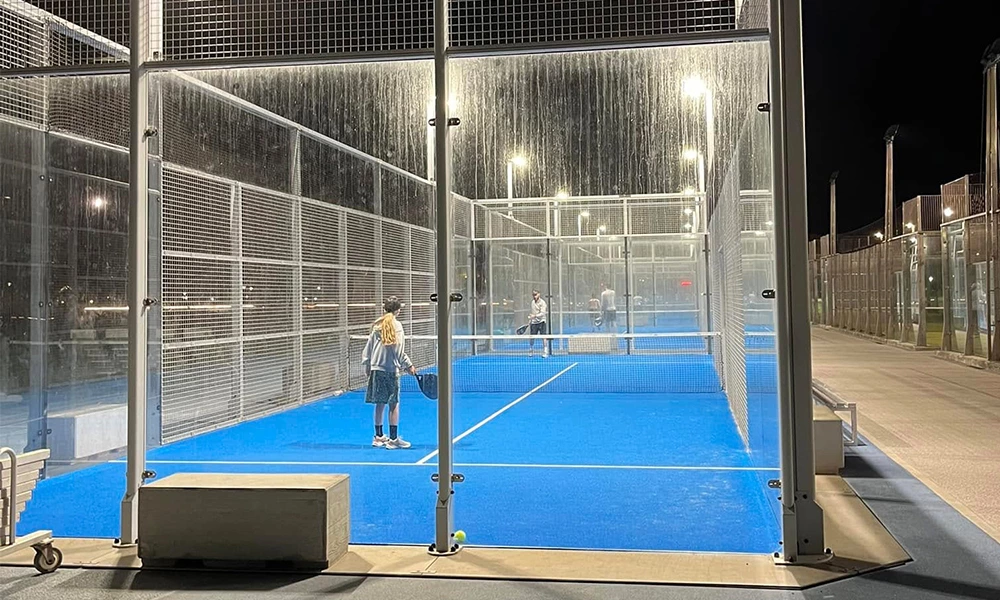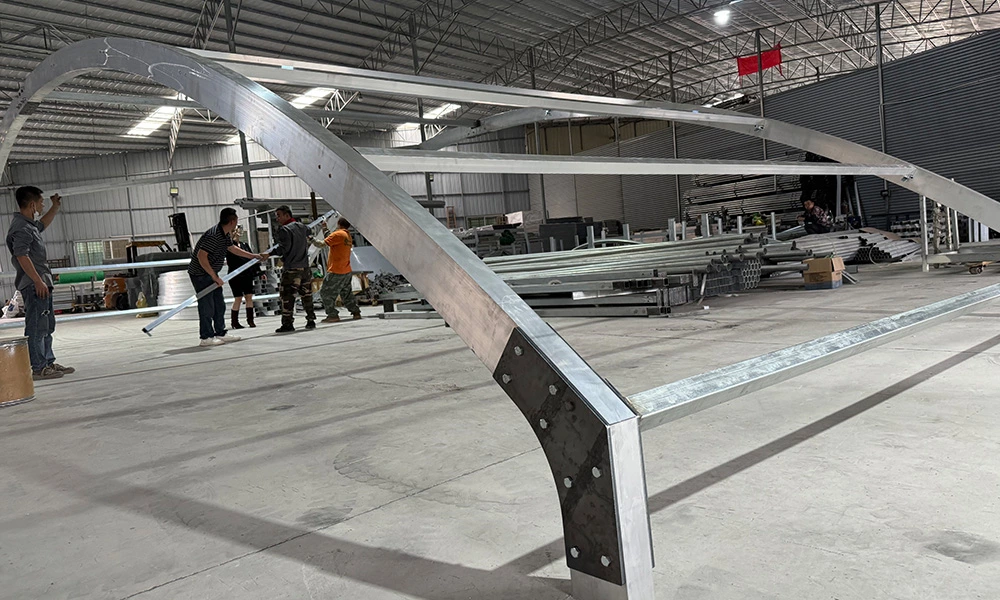Padel Singles: How to play and Singles Court Advantages
How did padel singles rise?
As a sport, Padel has been dominated by doubles since its inception, which is completely different from the phenomenon that singles in tennis are more popular. Doubles padel has long dominated, while singles are relatively secondary. In fact, there is no official tournament for singles padel, and it is even difficult to find a court designed specifically for singles. However, the demand for singles padel is gradually increasing, and more and more players are now playing in the form of two-person battles on traditional doubles courts. Although singles padel is still rare, courts designed specifically for singles are gradually becoming popular, injecting new vitality and possibilities into the sport.
Why choose singles padel?
Another appeal of singles padel is its convenience. Compared to the time required to coordinate multiple players in a doubles match, singles only requires one opponent to start the match, which is easier to achieve for modern people who are busy every day. In addition, singles is more economical in terms of court fees. Courts designed for singles are usually smaller and have relatively low rental costs. Even if traditional doubles courts are used for singles matches, the efficiency of venue utilization can be improved.
If you want to improve your padel skills through one-on-one matches, singles is undoubtedly the ideal choice. It not only challenges your physical limits, but also helps you improve your overall technical level. Whether you are competing with friends on a traditional doubles court or booking a dedicated singles court, this format can bring a refreshing sports experience. Start your singles padel journey today and experience the unique charm of this sport!

What are the significant advantages of singles padel tennis?
Helps improve skills
On the singles court, training techniques is more efficient, especially for beginners. Even experienced players can use singles practice to try out new strokes and focus on improving the accuracy of their shots without the pressure of traditional doubles matches.
Easier to organize matches
Singles only need to find one opponent, rather than a team of four, so it is more flexible. Singles padel tennis is a very practical choice for those who are new to the sport, not yet familiar with the club environment, or whose technical level is not high enough to attract other players.
Enhance physical training
Although the singles court is smaller, singles requires players to cover a wider area of the court than doubles, and the number of strokes will be significantly increased. Therefore, singles matches are more physically demanding and are very suitable for those who want to exercise or improve their physical fitness through competition.
What are the rules of padel singles?
Padel Singles Tips
Singles play requires different tactics than doubles. Here are some tips to help improve your singles performance:
Coverage: In singles, you need to cover the entire court by yourself, so flexible movement and efficient defense are essential.
Various shots: By changing the speed and angle of your shots, you can make it difficult for your opponent to adapt and increase the possibility of misjudgment.
Net attack: In singles, net attack is an effective means of suppression. Try to find opportunities to press forward and quickly end the opponent's return.
Padel Singles Rules
The rules of Padel Singles are roughly the same as doubles, but there is only one player on each side. Here are the key points of the singles rules:
Scoring rules: Singles games are scored in the same way as doubles, and the first player to win six games wins. If both sides win six games, a tiebreaker is required to determine the winner.
Serving rules: When serving, the player stands behind the baseline and hits the ball with his hand. The serve must land in the opponent's serving area on the diagonal.
Receiving rules: The player receiving the serve must return the ball after it bounces once. If you catch the ball before it bounces off the ground, you will lose points.
Court size: Singles uses the same court as doubles, with a width of 10 meters and a length of 20 meters.

What are the similarities and differences between singles padel and doubles padel?
Singles and doubles are the two main forms of padel, which differ significantly in court size, strategy and play, while maintaining the basic characteristics of the sport.
Differences in number of people
The most significant difference between singles padel and doubles is that there is only one player on each side, rather than two. Singles use a smaller court, and although the size of the court net and walls are the same as doubles, the reduced court area is more suitable for one-on-one confrontation. The equipment required for the game, such as rackets and balls, is exactly the same as doubles, but the pace and intensity of the game are significantly different.
Doubles is suitable for collaborative play
In singles, players must cover the entire court alone, which requires higher agility and physical management. Unlike doubles, where you can rely on your teammates to cooperate, singles players need to make all shot decisions alone, and must make independent judgments from serving to returning the ball. This format not only tests players' skills, but also hones their situational awareness and tactical execution.
Singles padel focuses on individual ability
Despite the different formats, singles and doubles remain consistent in some core elements, such as the use of wall rebounds, net control in strategy, and the fun and competitiveness of the sport. In general, singles padel focuses more on the comprehensive display of individual ability, while doubles emphasizes teamwork and tacit understanding. Which format to choose depends on personal preference, but both games reflect the unique charm of padel.
What are the advantages of a single padel court?
A single padel court is an emerging form of sports venue. Compared with the traditional double padel court, it has many unique advantages:
Small footprint
The single padel court is more compact and very suitable for limited indoor and outdoor spaces, such as back gardens, gyms, small club venues, etc., which saves costs for venue development and is easier to integrate into urban space.
Low construction cost
Due to the small size of the venue, the single padel court requires fewer construction materials, lighting systems and supporting facilities, which correspondingly reduces the construction and maintenance costs, and also makes the padel ball sport more popular.
Flexible adaptation to a variety of scenarios
The single padel court is suitable for personal practice or one-on-one competition, and can be used to quickly improve ball skills and enhance physical training. In addition, the venue can also support highly interactive entertainment modes to attract young people to participate.
Privacy and convenience
The single venue provides higher privacy for individual or family users without interference from multiple people. Especially in private gardens or small communities, padel sports can be carried out anytime and anywhere, meeting people's needs for convenient and healthy life in a fast-paced life.
In short, the single padel court is gradually becoming a new trend in the development of sports venues due to its flexibility and economy, and is favored by the market.

UNIPADEL Single Padel Court: Professional Design, Wonderful Experience
Single padel competition is a fun and challenging form of sport, but when played on a traditional doubles court, due to the larger area of the court, players may need more speed and physical strength to cover the entire court and return the ball. For this reason, a single court designed specifically for single padel competition is an ideal choice.
The single padel court launched by UNIPADEL is tailor-made for this form of competition. Compared with the standard doubles court (20m x 10m), the size of the single padel court is 20m x 6m, and the optimized design of the court width is more suitable for single competition. The streamlined court size not only improves the operability of the game, but also allows players to focus on technology and tactics in the sport and avoid excessive physical consumption. At the same time, such a design makes the game more compact and exciting.
UNIPADEL single padel court uses the same high-quality materials and structural standards as the doubles court to ensure the durability and safety of the court. In addition, the court is equipped with an energy-saving LED lighting system that supports all-weather use to provide players with the best competition environment.
At present, although single padel courts are still relatively scarce worldwide, the market demand is increasing. With its professional design and production capabilities, UNIPADEL is committed to providing more choices for padel enthusiasts, making single-player competitions an important part of this sport.




